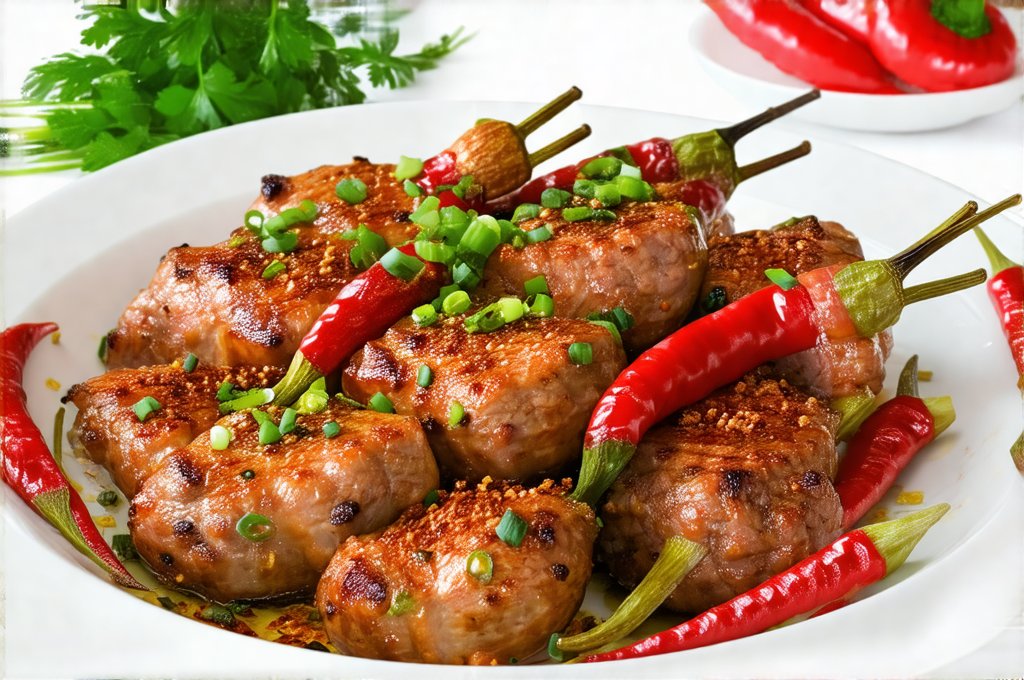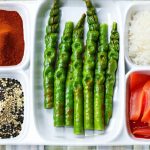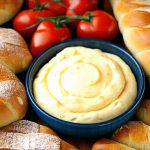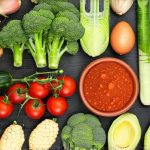Gastroesophageal reflux disease (GERD) affects millions worldwide, often leading to uncomfortable symptoms like heartburn, acid indigestion, and regurgitation. While medication can effectively manage these issues, dietary modifications play a crucial role in minimizing flare-ups and improving overall quality of life. Many traditional recipes rely heavily on ingredients known to trigger GERD – particularly garlic and chili peppers – making meal planning challenging for those seeking relief. This isn’t about deprivation; it’s about creative adaptation and discovering the vast array of flavors that can be enjoyed without exacerbating symptoms.
This article focuses on building a delicious and satisfying diet tailored for individuals with GERD, specifically avoiding both garlic and chili peppers. We will explore cooking methods and ingredient substitutions that allow you to enjoy flavorful meals while minimizing acid reflux. It’s about empowering you to take control of your dietary choices and rediscover the joy of eating without fear of discomfort. Remember, everyone reacts differently; what triggers one person may not affect another, so it’s important to listen to your body and adjust accordingly. You might also find easy lunches for IBS without garlic or onion helpful as you navigate dietary changes.
Understanding GERD Triggers & Dietary Strategies
GERD occurs when stomach acid frequently flows back into the esophagus. Certain foods are more likely to contribute to this reflux due to their inherent properties or how they interact with the lower esophageal sphincter (LES), the muscle that prevents acid from escaping. Garlic, despite its culinary benefits, contains compounds that can relax the LES, increasing the risk of reflux. Similarly, chili peppers contain capsaicin, which can irritate the esophagus and promote acid production. Beyond these two specific ingredients, high-fat foods, chocolate, caffeine, alcohol, citrus fruits, and carbonated beverages are also common triggers for many individuals.
The core strategy revolves around reducing acidity and minimizing LES relaxation. This includes:
* Smaller, more frequent meals: Avoid large portions that put pressure on the stomach.
* Low-fat cooking methods: Steaming, baking, grilling, or poaching are preferred over frying.
* Avoiding trigger foods: Identifying and eliminating personal triggers is essential.
* Staying upright after eating: Allow gravity to help keep acid down.
* Hydration: Water helps dilute stomach acid.
Focusing on bland, easily digestible foods initially can provide a foundation for rebuilding a GERD-friendly diet. As tolerance improves, you can gradually reintroduce other ingredients, always paying attention to your body’s response. Consider using gentle cooking methods like steaming or roasting to further ease the digestive process.
Flavorful Alternatives: Building Complexity Without Garlic or Chili
The challenge isn’t eliminating flavor; it’s finding alternative ways to build complexity and depth in your dishes. Many herbs and spices offer rich aromatic profiles without triggering GERD symptoms. For example, ginger provides a warming spice that can aid digestion, while turmeric boasts anti-inflammatory properties and a beautiful color. Other excellent options include:
* Herbs: Parsley, cilantro, basil, oregano, thyme, rosemary, mint.
* Spices: Cumin, coriander, cardamom, cinnamon, nutmeg, paprika (avoid smoked paprika if sensitive).
* Aromatic Vegetables: Onions (used in moderation), fennel, leeks (some individuals may find these triggering; monitor tolerance).
* Citrus Alternatives: While citrus is often a trigger, small amounts of lemon or lime juice can be tolerated by some.
Instead of relying on garlic to create savory depth, explore techniques like caramelizing onions slowly to develop their natural sweetness and umami. Using high-quality broth or stock as a base for soups and stews adds layers of flavor without irritation. Experimenting with different vinegar types (apple cider vinegar in small quantities can be soothing for some) can also provide brightness and acidity. If you’re looking for more guidance on dietary adjustments, exploring cooking tips for IBS may offer additional insights.
Creating Depth: Umami & Texture
Umami, often described as the “fifth taste,” is crucial to flavorful cooking. It’s that savory, satisfying sensation found in foods like mushrooms, tomatoes, seaweed, and aged cheeses (use caution with cheese due to potential fat content). Utilizing umami-rich ingredients can compensate for the missing garlic flavor.
- Mushroom Power: Incorporate various mushroom types – shiitake, cremini, portobello – into your dishes. Sauté them slowly to enhance their earthy flavor.
- Tomato Paste Concentration: Caramelizing tomato paste intensifies its umami and adds depth to sauces.
- Seaweed Accents: Small amounts of dried seaweed flakes (nori) can add a unique savory note to soups or broths.
Texture also plays a vital role in enjoyment. A creamy sauce, crunchy vegetables, or tender meat all contribute to a satisfying dining experience. Don’t underestimate the power of thoughtful presentation – visually appealing food is more enjoyable! You could even incorporate these principles when creating gut-friendly desserts without dairy or added sugar.
Smart Cooking Methods for Sensitive Stomachs
Certain cooking methods are inherently gentler on the digestive system. Steaming preserves nutrients and avoids adding excess fat. Baking or grilling allows for precise temperature control, preventing overcooking which can lead to tougher textures that are harder to digest.
- Avoid frying: Fried foods are high in fat and can exacerbate GERD symptoms.
- Limit butter & oil: Use healthy fats sparingly – olive oil is a good choice but use it judiciously.
- Slow cooking: Slow cookers and instant pots create tender, flavorful meals with minimal effort and reduced acidity.
Consider the impact of food temperatures too. Extremely hot foods can irritate the esophagus; allowing food to cool slightly before consuming may provide relief. Selecting the right cooking oils is also crucial for minimizing digestive distress.
Ingredient Swaps & Recipe Adaptation
Adapting existing recipes is often easier than starting from scratch. When a recipe calls for garlic, consider these substitutions:
* Asafoetida (hing): A strong-smelling spice used in Indian cuisine that mimics the flavor of garlic and onions when cooked (use sparingly – it’s potent!).
* Fennel: Offers a subtle anise-like flavor that can add depth to savory dishes.
* Onion & Herb Infusion: Sauté onions with your preferred herbs for a flavorful base.
For chili peppers, explore alternatives like white pepper in very small quantities (it has a milder heat) or use spices like cumin and coriander to create warmth without the burning sensation. Remember that recipe adaptation is an iterative process; experiment with different substitutions until you find what works best for your palate and digestive system. You may even enjoy some gut-friendly holiday desserts without bloating or reflux using these adaptations!
It’s important to reiterate that this information isn’t intended as medical advice. If you have GERD, consulting a doctor or registered dietitian is crucial for personalized guidance tailored to your specific needs and sensitivities. Dietary modifications are an integral part of managing GERD, but they should always be combined with appropriate medical care.


















